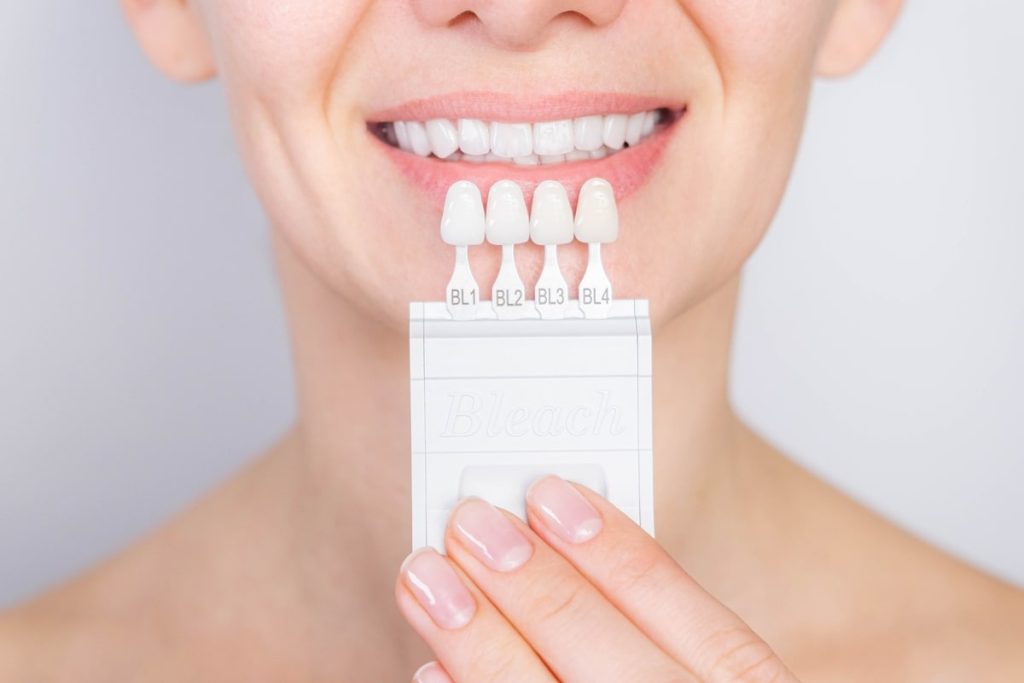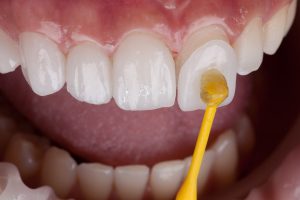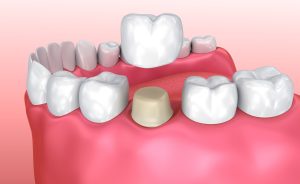July 19, 2024
Dr. Andres de Cardenas
All-on-4 dental implants, cosmetic bonding, Cosmetic Dental Care Services, cosmetic dentist Miami, Cosmetic Dentist Whitening, Cosmetic Dentistry, Daily Health Tips, dental care, Dental Care Tips, Dental Cleaning Appointment, Dental Implant Procedure, dental solutions, Dentist Appointment, family dental Care dentist, Family Dentist, FL, healthy teeth, Natural teeth whitening, Oral Cancer, Oral Care, professional denstists, Smile Makeover, Teeth Alignment, Teeth discoloration, Teeth Whitening, teeth whitening sensitive teeth, The Miami Cosmetic Dentist
Family Dental Care Miami | Miami Cosmetic Dentist > Blog > Blog - Category > Smile With Confidence: Exploring The Numerous Benefits Of Dental Veneers
Smile With Confidence: Exploring The Numerous Benefits Of Dental Veneers

Veneers are a popular cosmetic dentistry option that can transform the appearance of your teeth and enhance your smile. Investing in dental veneers gives you numerous benefits, such as improved appearance, increased confidence, and better oral health. At first glance, a veneer may appear simple, but its impact is monumental, offering myriad advantages. Benefits encompass enhanced visual appeal, a boost in self-confidence, and a positive influence on oral health.
You are not just investing in dental veneers on the journey toward an improved smile. You are investing in your confidence and well-being. The allure of porcelain veneers lies in their ability to cover up dental imperfections and mimic the natural light-reflecting properties of real teeth. They maintain strength and resilience comparable to natural tooth enamel, making them a preferred choice for cosmetic alterations.
Veneers Offers Another Options — Overview
Meanwhile, composite veneers offer another viable option. These are made of a composite resin that the dentist may sculpt directly onto the tooth surface. Composite veneers, while not as dentally robust or long-lasting as their porcelain counterparts, are a quicker and more cost-effective solution to presenting you with an upgraded smile.
Dental veneers are not just cosmetic appendages. They also cover the front of your natural teeth, providing a shield of protection against damage and contributing to better oral hygiene. Remember, protecting your oral health extends beyond mere brushing. It’s about comprehensive care that veneers can help provide.
All this leads to the growing popularity of dental veneers. As we ‘decode the term veneer’ and understand the role of veneers in dental aesthetics and protection, the increased acceptance and application of this cosmetic procedure become clear. Now, curious about how we further empower your smile?
Stay tuned as we delve deeper into the power of dental veneers in upcoming sections.
Get the Smile you Deserve!
Seek out the best cosmetic dentist, Dr. Andres de Cardenas, and call us today!
What Are Veneers And What Are They Used For?
As one delves deeper into cosmetic dentistry, Veneers turns out to be quite a fascinating concept. They are, in essence, thin shells meticulously crafted from porcelain or composite resin. Veneers are thin and strategically designed to fit seamlessly over the tooth’s front surface, remolding your smile and confidence. For individuals burdened with chipped, discolored, or misaligned teeth, veneers don’t just offer enhancements to their dental aesthetics. They offer a chance to redefine their self-esteem, providing an effective solution that contributes to a better life.
The construction of veneers allows for two distinct categories: porcelain veneers and composite veneers. Each type brings its set of benefits to the dental table. Porcelain veneers, often regarded as the most natural-looking option, are incredibly durable and stain-resistant. These veneers, made from a ceramic material, are known for their ability to mimic the light-reflecting properties of natural teeth.

On the other hand, composite veneers comprise a tooth-colored composite resin. The dentist may sculpt and bond these directly onto the tooth surface, providing a swift, cost-effective route to a superior smile.
Moreover, it’s crucial to note the distinction between veneers and crowns. A common confusion for many, the difference lies in their coverage. While veneers are exclusively designed to cover only the front surfaces of your teeth, thereby improving their appearance, crowns serve a broader function. They encase the entire tooth, lending structural stability to a damaged or decayed tooth that a veneer cannot provide.
Ultimately, the selection between veneers and crowns, or even between porcelain and composite veneers, is a decision based on individual dental needs. Under the experienced hands of your dentist at Andres de Cardenas, DMD, the optimal choice for you emerges, tailoring a dental solution that firmly caters to your vibrant smile and well-being.
Types of Dental Veneers: Best for Your Smile
Dentistry offers distinct dental veneer options tailored to suit a patient’s needs. Understanding these choices is crucial in choosing a treatment that enhances your smile to its fullest potential. Let’s delve into an extensive overview of the prominent dental veneer options available:
Porcelain Veneers
Regarded as a premium option by many, porcelain veneers boast an exquisite construction replete with numerous features. The most prominent characteristic is their similarity to natural tooth enamel, providing a near-perfect match for an authentic appearance. Made from dental porcelain, they offer unparalleled durability, lasting up to 10 to 15 years with proper care.
However, these veneers come with a caveat. The application process necessitates more tooth structure removal, making them a more invasive option than other alternatives. Patients keen on porcelain veneers must undergo an in-depth consultation with their dentist to determine if this option aligns with their overall dental health and needs.
Composite Veneers
Composite veneers offer another widespread option for individuals seeking a smile transformation. Made from composite resin, they require less removal of the tooth structure, making them a more conservative choice. Defining advantages include a faster treatment time and a generally less expensive price tag.
However, it is essential to note that composite veneers may not last as long as their porcelain counterparts, necessitating closer monitoring and possible replacements over time. Despite this drawback, composite veneers remain popular for various dental situations, including covering up discoloration or filling in chipped teeth.
The Dental Veneer Procedure — A Step-By-Step Guide

Applying dental veneers means venturing toward a more radiant and healthier smile. A well-laid path to this cosmetic change usually includes several significant steps:
1. Consultation
Beginning this journey involves a comprehensive consultation with the dentist. This stage is vital for both patient and dentist to understand and clarify the patient’s dental needs and expectations. The dentist will assess the patient’s teeth, considering factors like oral health, tooth condition, and dental structure, to determine if veneers are a suitable solution.
2. Tooth Preparation
The dentist proceeds with tooth preparation once confirmed that the patient is an ideal candidate for dental veneers. This step involves cleaning the tooth surface thoroughly and modifying it, creating an interestingly etched landscape suitable for the front.
3. Impressions
The next step involves creating an accurate replication of the etched teeth. The dentist will make an image or an impression of the prepared teeth, which is crucial for fabricating the veneers. This impression is sent to the dental laboratory, where technicians create custom-fitted veneers that closely mirror the original specs of the prepared teeth.
4. Temporary Veneers
Waiting for the custom veneers can take a few weeks. Therefore, the dentist may place temporary veneers on the patient’s teeth. This interim solution protects the prepared teeth and gives the patient an attractive smile during waiting.
5. Bonding
Once the custom veneers arrive, the real game begins. The dentist initially tests the surfaces on the patient’s teeth, ensuring correct fit, appropriate shade, and satisfactory appearance. Once all parameters are met, the dentist utilizes dental cement to bond the veneers securely onto the patient’s teeth.
6. Final Adjustments and Follow-Up
The dentist’s role doesn’t end with the bonding of the veneers. After the bonding procedure, the dentist will make surface adjustments for optimal fit and comfort. A follow-up appointment will be scheduled to check the characters and monitor the patient’s adjustment to the new dental additions.
To conclude, the entire process of getting dental veneers, from consultation to final adjustments, is carefully orchestrated with the patient’s comfort, satisfaction, and dental health at the forefront. It’s an aesthetic transformation that packs health and beauty, delivering many benefits hidden behind each radiant smile.
Benefits of Veneers: Enhancing Smiles and Lives

Dental veneers are not just a cosmetic solution; they undeniably impact patients’ lives by providing numerous benefits. Let’s take a look at some of the advantages of choosing veneers for improving your smile:
Improved Appearance
One of the most striking benefits of veneers is the significant enhancement to teeth’s aesthetics. Covering chips, stains, or misalignments with custom masks results in an overall improved appearance, providing a bright and balanced smile.
Increased Confidence
An attractive and healthy smile instills confidence in individuals. This increased self-esteem leads to a positive impact on social interactions and overall well-being.
Better Oral Health
As a result of an improved appearance and increased confidence, an individual is more likely to engage in better oral hygiene practices, leading to enhanced overall oral health. Consequently, healthier teeth and gums contribute to better general health.
Stain Resistance
Porcelain veneers, in particular, are known for their impressive resistance to stains. The ceramic material is less porous than natural teeth, meaning it is less likely to absorb the color of food and drinks consumed.
Customization
Dental veneers can be tailored to match your teeth’ unique characteristics closely. Dental professionals can create surfaces that complement and enhance the natural beauty of your existing smile through color, opaqueness, and size adjustments.
Durability
Dental veneers, especially porcelain ones, are known for their fantastic longevity with proper care and maintenance. Patients can expect their facades to last 10 to 15 years before needing a replacement.
Quick Results
If you seek a swift solution for your dental woes, veneers offer an ideal option. Unlike orthodontic treatments, which may take months or years to yield results, veneers can transform your smile in just a couple of appointments.
Low-Maintenance
Dental veneers do not require any special care other than regular oral hygiene practices like brushing, flossing, and periodic dental check-ups. Keeping up with these habits will maintain your veneers and contribute to your overall oral health.
Conservative Approach
While it depends on the type of veneer chosen, these cosmetic dental solutions often require minimal to no removal of the natural tooth structure compared to alternative treatments like crowns. This more conservative approach allows patients to preserve tooth structure and maintain oral health.
Enamel Protection
Dental veneers can offer extra protection against damage, wear, and sensitivity caused by everyday activities like eating and drinking for patients with weakened or sensitive enamel.
A Versatile Solution
Dental veneers can address a multitude of dental imperfections, from chips and cracks to severe discoloration and even minor misalignments. Covering many issues makes them a versatile and appealing solution for many dental concerns.
Dental veneers provide many benefits, from improved appearance and confidence to better oral health. Their versatility, durability, and low-maintenance nature make them attractive for individuals seeking a smile makeover. By considering the benefits mentioned above, patients can make a well-informed decision about whether dental veneers are the right course of action for them.
Difference Between Veneers and Crowns

Although veneers and crowns share some similarities, such as improving the appearance and functionality of teeth, they are distinct dental solutions applied for different reasons. Understanding their differences is crucial for choosing the best action to suit individual dental needs.
Purpose and Application
- Veneers
- Primarily a cosmetic solution, veneers target issues like discoloration, chips, gaps, and minor misalignment of teeth.
- Veneers are thin, custom-made shells applied to the front surface of teeth to enhance their appearance.
- Applying a veneer involves removing minimal tooth enamel, helping preserve natural tooth structure.
- Crowns
- Crowns serve cosmetic and functional purposes, often used to restore and strengthen compromised teeth.
- A crown is a cap that covers the entire tooth surface, reinforcing the tooth’s structure and protecting it from further damage.
- Applying a crown entails significantly more removing tooth enamel and reshaping the tooth to fit the crown precisely.
The Procedure And Time Frame
- Veneers
- The process of getting a veneer typically requires two to three dental appointments. In the first appointment, the dentist evaluates the patient’s needs, the tooth is prepared, and an impression is made. The second appointment involves bonding the custom-made veneer to the tooth.
- Temporary veneers may be placed on the patient’s teeth while waiting for the custom veneers to be fabricated by a dental laboratory.
- Crowns
- The process of receiving a crown typically involves two dental appointments. In the first appointment, the dentist prepares the tooth, takes an impression, and places a temporary crown. The second appointment consists of the placement of the permanent crown.
- Dental crowns may take around two weeks to be fabricated in a dental laboratory, similar to the time frame for veneers.
Durability And Longevity
- Veneers
- A veneer can last up to 20 years when they are bonded entirely to enamel.
- Veneers may be prone to chipping or cracking more than crowns as they are thinner and cover a smaller surface area.
- Crowns
- Crowns tend to last less than veneers, with most lasting from 5 to 15
- Crowns are usually more robust than veneers, providing better strength and durability.
Final Consideration and Expense
- Veneers
- Less invasive veneers preserve more natural tooth structure and require less tooth reduction.
- Generally, the cost of a veneer is considerably variable, depending on factors such as location, materials used, and the dentist’s expertise.
- Crowns
- Crowns are more invasive than veneers, requiring more tooth reduction and reshaping.
- The cost of a crown is typically higher than a veneer. However, the price varies depending on material, location, and the dentist’s expertise.
Choosing The Right Veneer — Key Guide

Your dental health should never be left to chance or be taken lightly. A radiant, healthy smile is a confidence booster and a sign of good overall health. Here’s how to make the most suitable choice of veneer for the perfect smile:
Assessing Individual Dental Health and Needs
Every set of teeth is unique, just like their owners, necessitating an exclusive approach to each individual’s oral care. Before inserting a dental veneer, your dentist will evaluate your oral health to determine if veneers are the right fit for you. Do you require veneers to cover your teeth’ front surface, or is a crown the better solution?
Problems like tooth decay or gum disease need addressing first, as veneers may not cover these aspects. Maintain your oral hygiene with regular brushing practices to prolong the beauty of your smile.
Discussing Cosmetic Goals with a Dentist
Are you seeking a minor cosmetic enhancement or a complete smile makeover? Your dentist can guide you through various veneer options, including porcelain or composite veneer units, to help achieve your desired outcome.
Porcelain veneers are often lauded for their natural appearance and durability. In contrast, composite resin veneers can be a cost-effective way of enhancing the aesthetics of your natural teeth.
Evaluating Cost and Durability Factors
Although veneers are thin layers applied to the tooth surface, don’t underestimate their strength and longevity. A dental veneer can last for a decade or more when properly maintained. Porcelain veneers tend to be more durable than composite veneers but come with a heftier price tag. Your dentist may suggest the most affordable option that aligns with your dental needs and budget.
FAQs About Veneers Dental

Below are some additional frequently asked questions (FAQs) regarding dental veneers.
Is getting a veneer a painful process?
The veneer placement procedure is usually not painful, as a local anesthetic is often used during tooth preparation. Some mild discomfort and sensitivity can be experienced after the process, but these effects are temporary and subside independently.
Can I get a veneer if I have gum disease?
Dentists recommend treating any periodontal or gum disease before proceeding with a veneer. The presence of gum disease could compromise the longevity and success of the veneer treatment.
Will veneers look natural?
One of the significant advantages of veneers is their ability to blend seamlessly with your natural teeth. The veneer’s color, size, and shape can be adjusted to match the surrounding teeth, resulting in a natural-looking enhancement to your smile.
Can I still get cavities with a veneer?
Yes, developing cavities with a veneer is still possible. This is why it is crucial to maintain good oral hygiene practices, such as regular brushing, flossing, and dental check-ups. Avoiding sugary foods and drinks can also help prevent dental decay.
Are veneers reversible?
The process of getting a veneer involves the removal of a thin layer of your tooth’s enamel. Therefore, the procedure is irreversible as this enamel cannot be replaced. However, if a veneer needs to be removed, it can often be replaced with a new one.
How often will I need to replace my veneer?
The lifespan of a veneer largely depends on the individual’s oral hygiene habits and lifestyle. However, with adequate care, veneers typically last up to 20 years.
Can I get a veneer on a single tooth?
Yes, it’s entirely possible to get a veneer on a single tooth. Each mask is individually crafted, allowing dentists to target specific teeth to optimize their patients’ smiles.
Can veneers be whitened?
Veneers themselves cannot be whitened. But don’t worry – porcelain veneers are highly stain-resistant and maintain their color well over time. Before the veneer procedure, teeth are often whitened to a desired shade, matching the masks.
These FAQs provide further insight into what potential veneer patients can expect. As always, consulting with a dental professional is advised for more personalized information related to dental veneers.
Veneers are a fantastic dental solution to regain confidence and flaunt your natural-looking teeth. They improve your appearance and ensure good oral health by protecting the enamel of your natural teeth. Like all substantial life decisions, choosing the suitable veneer should be something you carefully consider and openly discuss with your dentist.
Remember, it’s not only about having a dazzled-up brightness but also about enhancing your natural charm and maintaining excellent oral health. So, listen to your dentist, understand your options, and smile confidently with the perfect veneer.
Call Dr. Andres de Cardenas today at 305-251-3334!
Cosmetic dentistry offers many options for people who are unhappy with the appearance of their smile. If you’re one of these people, we encourage you to seek out the veneers, cosmetic dentistry in Miami.
Get In Touch With Us
Recent Posts
- Bright Smiles, Brighter Futures: Why Cosmetic Dentist Whitening Is Worth It
- Safeguard Your Smile: Family Dental Care Dentist Debunks DIY Dentistry Tips!
- Dental Implant FAQs: What to Know About the Recovery Process
- The Health Benefits Of Cosmetic Dental Care Services: Beyond Vanity
- The Ultimate Cosmetic Dental Checklist For Miami, FL Residents
Related articles
July 5, 2024
Dr. Andres de Cardenas
All-on-4 dental implants, cosmetic bonding, Cosmetic Dental Care Services, cosmetic dentist Miami, Cosmetic Dentistry, Daily Health Tips, dental care, Dental Care Tips, Dental Cleaning Appointment, Dental Implant Procedure, dental implant recovery, dental implants, dental solutions, Dentist Appointment, family dental Care dentist, Family Dentist, FL, healthy teeth, Oral Cancer, Oral Care, professional denstists, Smile Makeover, Teeth Alignment, Teeth discoloration, Teeth Whitening, The Miami Cosmetic Dentist
Safeguard Your Smile: Family Dental Care Dentist Debunks DIY Dentistry Tips!
June 21, 2024
Dr. Andres de Cardenas
All-on-4 dental implants, cosmetic bonding, Cosmetic Dental Care Services, cosmetic dentist Miami, Cosmetic Dentistry, Daily Health Tips, dental care, Dental Care Tips, Dental Cleaning Appointment, Dental Implant Procedure, dental implant recovery, dental implants, dental solutions, Dentist Appointment, Family Dentist, FL, healthy teeth, Oral Cancer, Oral Care, professional denstists, Smile Makeover, Teeth Alignment, Teeth discoloration, Teeth Whitening, The Miami Cosmetic Dentist


